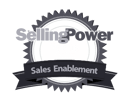
Customer experience management – sustaining symbiotic value
Client loyalty can eventually span a lifetime, but to make it more attainable, we should take it one step at a time. Whatever situation we’re in, good or bad, we must ask ourselves what we refer to as the Loyalty Question: “What am I doing right now that will make the customer come back the next time they need what we sell?” It’s not about a lifetime. It’s about the next time, every time.
A symbiotic relationship endures because it is built on mutual trust, respect and a total commitment to working with “win-win” principles. Further, both parties recognize the cost of the relationship failing.
There are those commentators within the sales industry who have suggested that client/customer experience management is the new “battleground” But the word, “battle” intimates an adversarial approach to conducting business, which is totally inappropriate in today’s buying/selling climate.
Maintaining symbiosis or “Win-Win” requires considerable effort, not just at the beginning, it requires total commitment – from both parties.
In a survey carried out by the Institute of Sales and Marketing Management in the UK 18 months ago, they asked the question, “Thinking about when you last changed supplier, why did you do so?” What the Institute was expecting were quite a lot of responses that suggested they were offered new, shinier deals or less expensive deals. But actually, more than 70% of respondents came back and said it was due to the incumbent supplier’s complacency. They felt ignored. They felt undervalued.
At the end of the day, taking a long-term approach proves more profitable.
This is precisely what happens when vendors fail to maintain their part of the bargain – symbiosis breaks down and the client disappears, often for good, never to return.
As we are all aware, getting to know the client and understanding their needs is not a quick and easy process. Clients possess a hierarchy of needs which have to be uncovered gradually. This is why we need a new type of approach for a new type of client.
What does this new breed of client focused organization look like?
For a start, they have progressed from the more traditional ‘lone ranger’ approach of selling, to a more team-based consultative style. That requires a need to fulfill three basic roles – that of Business Consultant, Long Term Ally and Strategic Orchestrator.
By combining all three roles, vendors are more able to develop and maintain long-term relationships with clients. At the same time, organizations need to ensure that they provide their salespeople with the vital support systems and training that enable them to make the most of their knowledge and skills.
Business Consultant
Nowadays, the emphasis is on establishing long-term, mutually beneficial relationships and, in order to achieve this, we need to earn the right to continue discussions with our clients. Before we can proceed to sell our solutions or services, we need to reassure the client of our integrity, reliability and ability to understand and recommend the appropriate solution. We can do this by demonstrating:
- Up-to-date knowledge of business news and current affairs
- An in-depth understanding of the customer’s industry, company and strategies, as well as an appreciation of “the big picture”
- A readiness to exchange information and ideas with the client organization
- The ability to listen and absorb information
Strategic Orchestrator
To fulfill this role, we need to be seen as the most appropriate partner for engineering the best solution. This involves co-coordinating all of the information, resources and activities needed to support clients before, during and after the sale. It means enlisting support from specialist colleagues and hence the move away from the “lone ranger” approach.
We need to be able to demonstrate:
- Expertise in developing and managing a team
- Ability to manage priorities and performance
- Ability to co-ordinate delivery and service to clients
- Efficiency
- Flexibility
This in turn leads to a high level of confidence in vendor and that in turn can lead to faster buying decisions, increased repeat business and strengthened links between client and supplier organizations.
Long Term Ally
Since the key to differentiation is in forging closer links with clients, the role of Long Term Ally is a crucial one. Once the vendor has earned the right, it is important to develop and maintain the relationship.
As the term suggests, acting as a Long Term Ally involves maintaining contact with the client, even when there is no immediate prospect for a sale.
It also suggests that the vendor needs to be committed to the long-term development of the relationship. Our research shows that top salespeople demonstrate this commitment by continuously looking for ways to:
- Build interpersonal trust
- Show genuine concern for the client’s short and long-term interest
- Identify ways to strengthen the quality of their business relationship
- Deal with issues openly and honestly
- Deliver on promises
At the end of the day, taking a long-term approach proves more profitable since the client will recognize that the vendor is taking a committed interest and, in so doing, is giving honest and open advice.
In Summary – Long Term Allies and Mutually Beneficial Agreements
Supplier organizations must be willing to:
- Elicit feedback from clients regarding overall satisfaction with the products / services delivered
- Maintain regular contact with current and prospective clients
- Alert clients to new developments within own organization
- Review the business relationship underlying each account on a regular basis
Buyer organization must be willing to:
- Keep suppliers “in the loop” regarding the company’s strategic direction and needs
- Value the record of service provided by supplier organizations above lower cost competitors
- Grant access and information about their customers to the supplier organizations

By Jonathan Farrington
Jonathan Farrington is a globally recognized business coach, mentor, author, keynote speaker and sales thought leader. He is the Senior Partner of Jonathan Farrington & Associates, and CEO of Top Sales World, based in London & Paris. Jonathan is also the co-editor of Top Sales Magazine.
Find out more about Jonathan Farrington on LinkedIn







